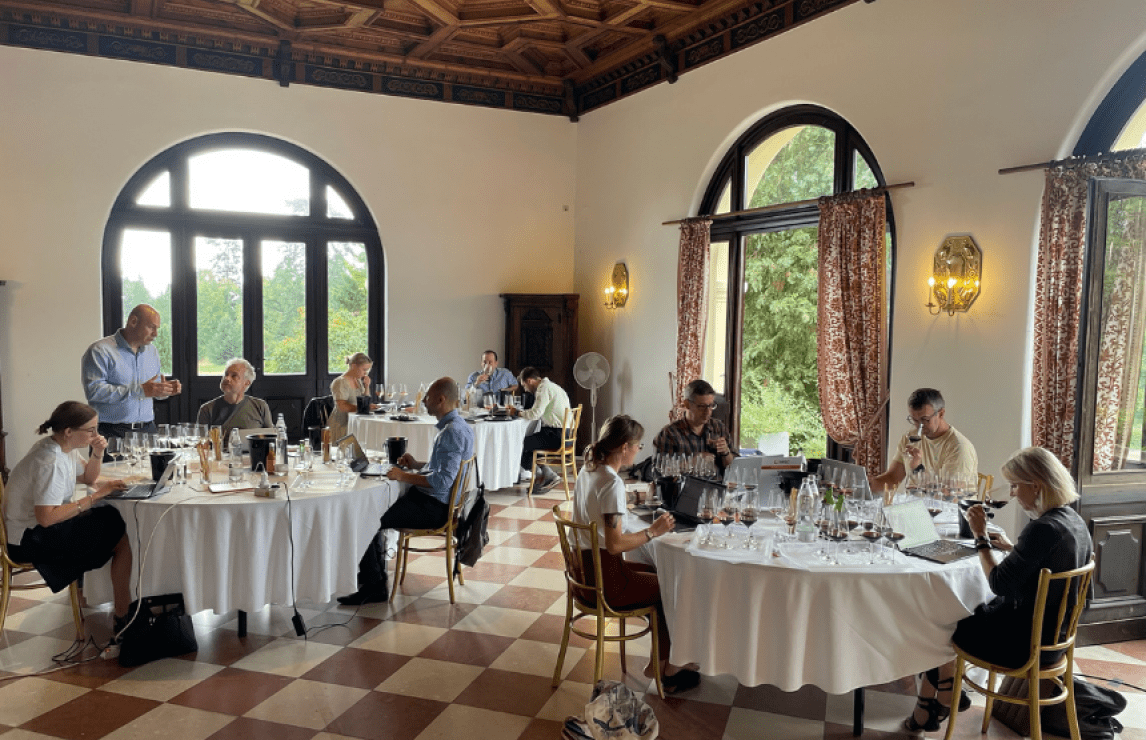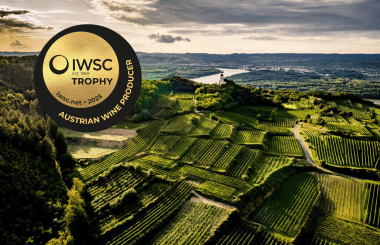IWSC 2024 Wine Judging in Austria: judges' deliberations
The IWSC Wine Judging in Austria in partnership with Austrian Wine has come to a close. Over several days, our panel of expert judges, led by the IWSC Wine Judging Committee member Dirceu Vianna Junior MW, have been tasting over 350 wines from Austria including regional specialities and international favourites. The judges found that the overall quality of the entries was even higher than expected sharing that "the judging attests to the quality of Austrian wine as a category. It is very rare in this (demanding) competition that almost all wines come away with a medal, which are all sought-after whether they are bronze, silver or gold. This is the Olympics of wine judging!"
One of the most successful varieties was Pinot Noir which impressed the judges with a range of interesting styles. Several strong silver medals were awarded to these wines, with one such wine catching the attention of our judges thanks to its close similarity to New Zealand Pinot Noir. "A Pinot noir nose that almost recalls New Zealand with some pomegranade, cola flavour and a lovely sense of earthiness, there is some red licorice and wet leaves."
Another grape variety that stood out to our judges was the Austrian St Laurent, the third most widely grown grape in the country. Our panels found that the St Laurent entries had a sense of quality alongside sensitive winemaking, reflected in the three silver medals awarded to wines of this style.
Austrian rosé intrigued the judges, who noted the potential within the category for local varieties. The best examples of these wines were labelled as "diaphanous and silky" with "reinvigorating acidityand balanced, rounded texture".
The Grüner Veltliner entries led to some debate within the panels with several judges being impressed with the stronger entries from every region, while others were hoping for more complexity in flavour and texture. On the whole, the judges found the regional stylistic differences within the same grape variety a "real revelation". The riper styles of Grüner Veltliner from Burgerland achieved silver medals, with one such example being praised for the "hints of wasabi and matcha" on the palate. While a Grüner Veltliner from Kempstal was awarded a gold medal thanks to its "lovely fruit intensity, smooth and seductive style, and long finish." Another gold winner was a Niederösterreich Grüner Veltliner that achieved 96 points, a wine the judges described as "full and opulent with oranges, melon and gentle green tea flavours, developing into honey and chamomile."
Riesling was another successful variety with our judges thrilled to see the varietal typicity in a wide range of styles. A 2021 Riesling was awarded a silver medal for its "palate of sweet nectarines, hints of saffron and a beautiful elegance on the end". A different, more intense style achieved 91 points and a silver medal, with the judges labelling it as "perky and characterful with some intensity".
The judges felt that the potential for great quality Sekt was showcased by the flight of sparkling wine which was awarded 3 silver medals and 4 bronze medals. One standout was a Chardonnay-based wine that displayed classic notes of traditional method Chardonnay sparkling with "great complexity, autolytic character and fabulous drinkability" according to the judges.
One particular grape that surprised the judges was Ráthay. The flights were described as "delightful and exciting". Another local variety was Roter Veltliner. The judges felt that the wines showcased the varietal character, interest, and ambition while "bringing a sense of fun to the flights".
The panel noted that the Zweigelt entries were strong, with a number of delicious, expressive and beautifully balanced wines that show what the variety can achieve in Austria. While there were several wines which caused debate amongst the judges, they felt this showed the "challenges of the variety, and the success of those who manage to master them".
Eiswein was a standout for several of the judges, with the category receiving several silver medals and one strong gold for a particularly excellent example. The gold medal winning wine was described as "seriously good, with a deep orange, ginger, quince, fig, and marmalade nose, with a luscious texture with great intensity". On the whole, the judges appreciated the sense of balance within the Eiswein category and felt that the wines retained a sense of "freshness and vibrancy".
Overall this has been another excellent year of judging in Austria, with the exceptional quality of entries reflected by the medal results. The judges concluded that the tasting was marked by "consistent excellence and strong varietal typicity’" Keep an eye out for our full results announcement on the 27 August.



